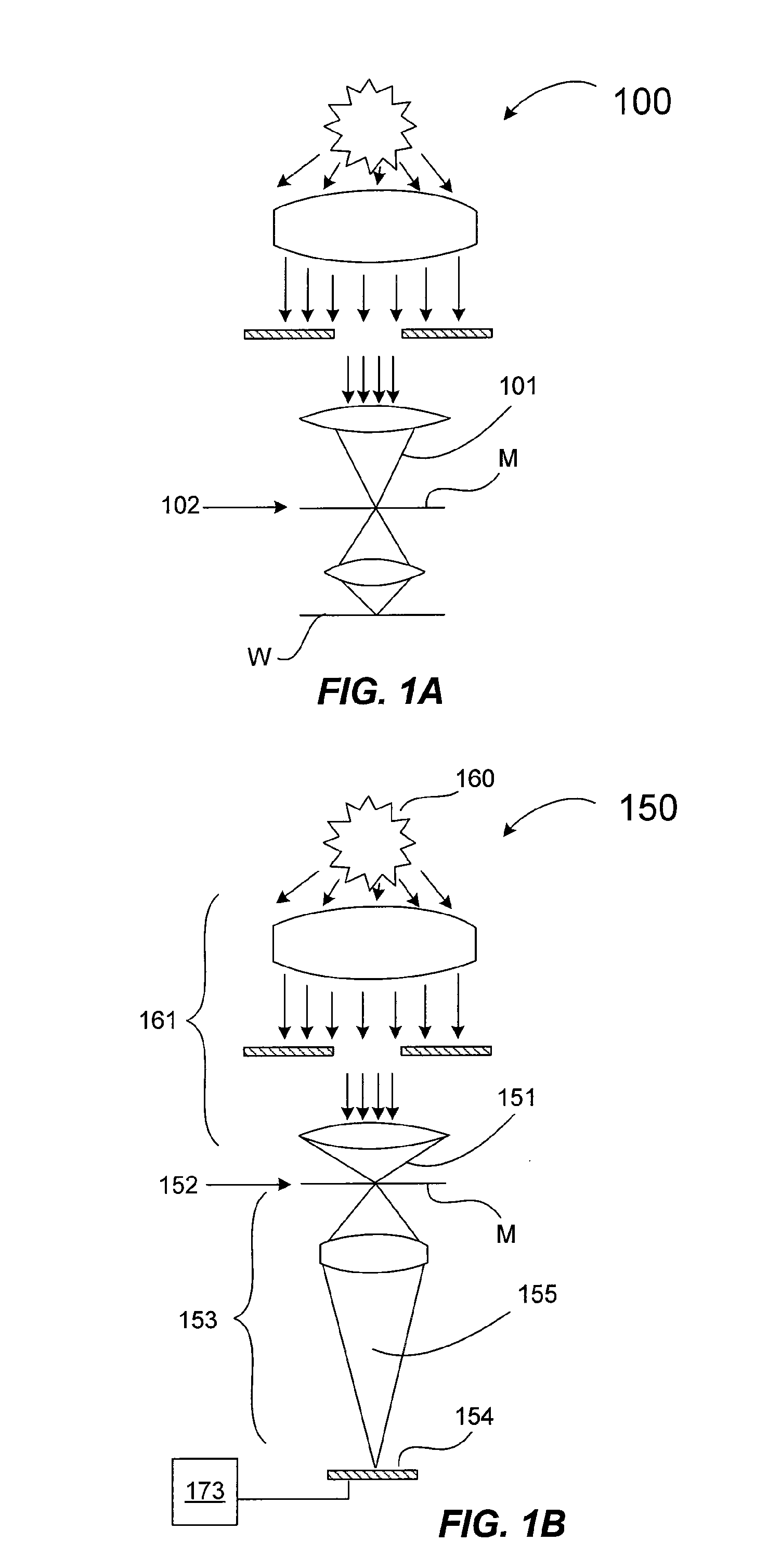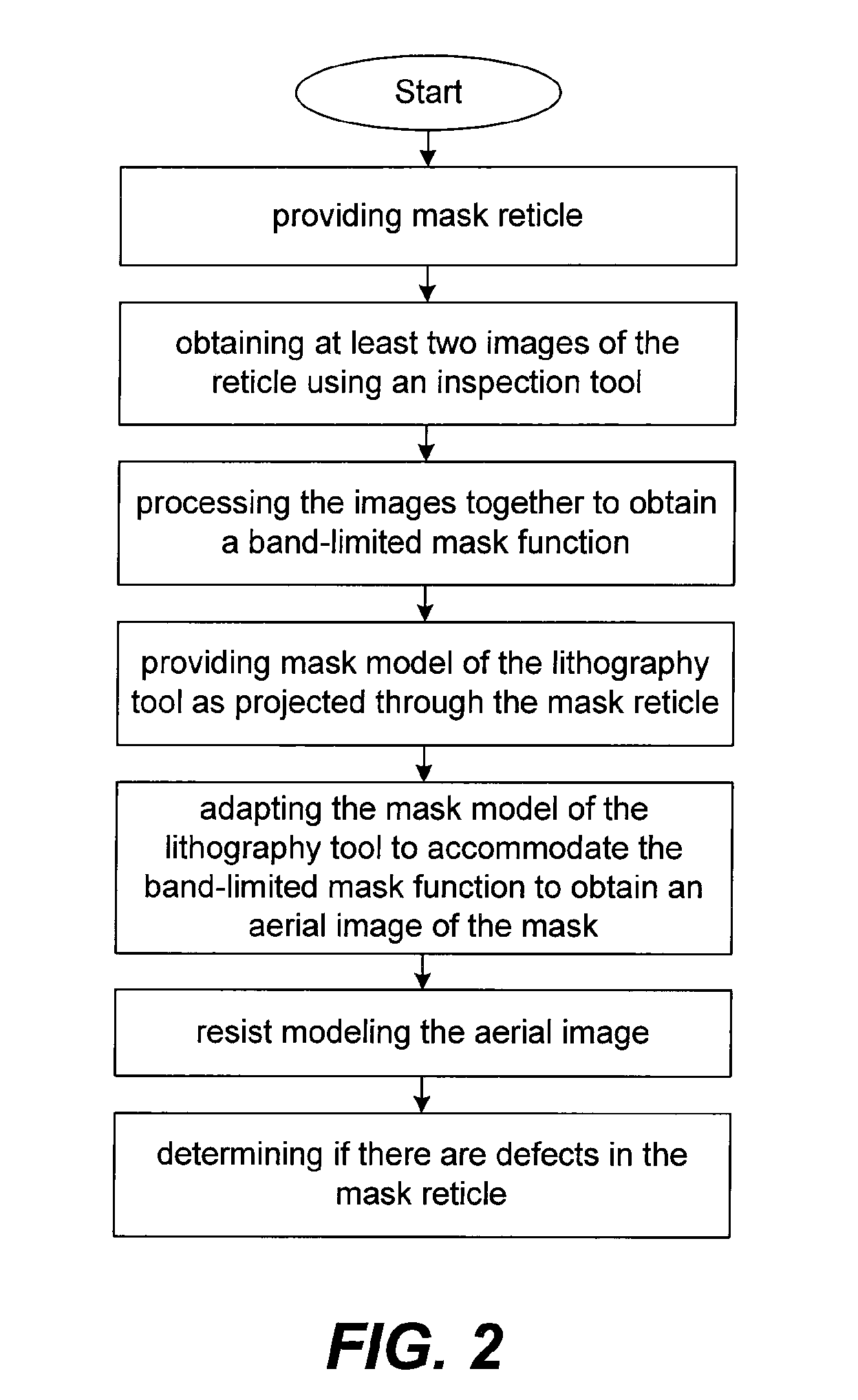Method for detecting lithographically significant defects on reticles
a technology reticles, which is applied in the field of detection of lithographically significant defects on photomasks, can solve the problems of reducing the resolution limit of available lithography tools and processes, increasing the difficulty of photolithographic process used to print circuit patterns, and increasing the complexity of complex circuits
- Summary
- Abstract
- Description
- Claims
- Application Information
AI Technical Summary
Problems solved by technology
Method used
Image
Examples
Embodiment Construction
[0020]The present invention has been particularly shown and described with respect to certain embodiments and specific features thereof. The embodiments set forth herein below are to be taken as illustrative rather than limiting. It should be readily apparent to those of ordinary skill in the art that various changes and modifications in form and detail may be made without departing from the spirit and scope of the invention.
[0021]The following detailed description describes various embodiments of a method and approach for detecting defects in a photomask or comparing a photomask with an intended pattern.
[0022]As indicated above, hybrid photomask inspection techniques for performing MEEF aware photomask inspections have many advantages over other approaches. However, as also indicated above, these techniques, as previously implemented, have shortcomings. One key shortcoming has been the way in which the mask pattern is recovered from the high-resolution mask image. Techniques used t...
PUM
 Login to View More
Login to View More Abstract
Description
Claims
Application Information
 Login to View More
Login to View More - R&D
- Intellectual Property
- Life Sciences
- Materials
- Tech Scout
- Unparalleled Data Quality
- Higher Quality Content
- 60% Fewer Hallucinations
Browse by: Latest US Patents, China's latest patents, Technical Efficacy Thesaurus, Application Domain, Technology Topic, Popular Technical Reports.
© 2025 PatSnap. All rights reserved.Legal|Privacy policy|Modern Slavery Act Transparency Statement|Sitemap|About US| Contact US: help@patsnap.com



